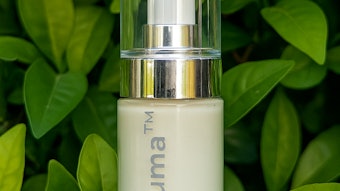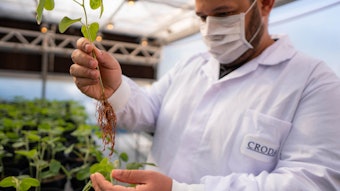“Innovation distinguishes between a leader and a follower.”—Steve Jobs
Johns Hopkins University, Princeton, Rutgers, Columbia, University of Cincinnati, University of Southern Mississippi … in 2010, the first New York Society of Cosmetic Chemists’ (NYSCC) Technology Transfer Conference brought speakers and posters (visual presentations of research) from all those schools, signaling an important new event where academia and the beauty industry can interact. The $10,000 prize for best research (see “The Top Prize”), as presented, was NYSCC’s unmistakable signal to researchers that the conference was positioned to be a significant new venue for sharing cutting-edge ideas.
The Transfer: Wound Healing to Anti-aging
In the opening presentation, Johns Hopkins’ Wes Blakeslee described the basic resources of the university, highlighted some seed companies grown from the university’s discoveries and technologies it still had in the lab (especially renowned in the medical arena). The university’s research budget is the largest of any university in the country, and one example of the work that budget allows involves biodegradable dextran hydrogels—another illustrated the potential dermal benefits of gene therapy with growth factor DNA, specifically keratinocyte growth factor (KGF).
This is research, notably the university’s Optimal Dextran Hydrogels for Therapeutic Vascular Regeneration and Wound Healing,1 that is first concerned with rapid and effective wound healing.
The science of antiaging skin products is closely related to wound healing. In wound healing, a complex interplay of biological signals and rebuilding mechanisms takes place over a period of days. The skin must be protected from infection, while dermal cells, the extracellular matrix and blood vessels are created out of the neighboring undamaged tissue. The site should return to its pre-injured state with minimum scaring.
For wound healing and tissue regeneration, one of the great challenges is restoring the circulatory system. Work performed in Johns Hopkins University’s Gerecht Lab2 accomplished this by immobilizing select angiogenic growth factors in a biodegradable polymeric system with reduced crosslinking to resemble the extracellular matrix.
Explaining and Exploring
It seems like a lot of technical jargon to delve through, but the Gerecht Lab work can be reduced to some self-evident ideas. Angiogenesis is the physiological process involving the growth of new blood vessels from existing vessels. Vasculogenesis is the term used for spontaneous blood vessel formation. Angiogenesis is a normal and vital process in growth and development, as well as in wound healing. In short, when the skin gets hurt, it is necessary to replace the blood vessels as well as the dermal tissue.
The dextran hydrogel provides a scaffold for healing tissue to re-grow. It is biodegradable, so it melts away as the genuine body components take over. When polymers are formed, more cross-linking creates denser structures. By careful control of the cross-linking, the gel encourages rapid healing—of course there is a lot more to the actual technology. Then, molecules that send healing signals are embedded in the matrix during its formation.
Technical jargon aside, the basic idea is to enhance the natural healing process both in the delivery matrix and the biologically tuned actives.
Regarding the dermal benefits of gene therapy mentioned previously in this column, KGF is an inducer of epithelial cell proliferation and differentiation (epithelial cells refer to cells that, among other things, line hollow organs and glands—including those that are keratinized and, therefore, are waterproof and found in skin). Gene Facelift is a Johns Hopkins’ biotech spin-off based on work by Aaron Tabor, MD, on the dermal benefits of KGF-1 pDNA. The genetic engineering is used for the development of anti-aging and antiwrinkle gene therapy drugs. The technology is designed to replace damaged skin DNA in order to heal wrinkles and reverse the aging process. In the conventional approach to skin treatment, the growth factors don’t stay active long due to protease decomposition. Gene therapy promoting overexpression of the growth factors for a sustained period is a possible solution, and KGF-1 pDNA administration has the potential to reverse many of the undesirable effects of skin aging and wrinkle formation.
In simplest terms, stimulating growth is good, but it must be carefully controlled so that growth is not out of control. Gene therapy is not the place for amateur scientists to dabble. If a therapy makes skin grow, it is critical that it does not make other body tissue grow. The small peptide fragments used in many antiaging products may have unintended results—if indeed they do work.
The frontier where Tabor works is clearly at the border of cosmetics and drugs, and shows just how deep the science gets to achieve true antiaging effects. The change is dramatic even to the untrained eye.
Claims made on antiaging ingredients in the beauty industry are plentiful, but clinical substantiation on the peer reviewed level is far less common. The methodologies expounded in the NYSCC Technology Transfer Conference, showcasing the best of academic research, is a vital key to uncovering the efficacious products of the future.
Acknowledgements: Thanks to Wes Blakeslee and Aaron Tabor, MD, of Johns Hopkins University, and Leonel Rojo of Rutgers University, for their generous cooperation in providing guidance and materials for this column.
References
- Marketing Summary C-11156.pdf, www.techtransfer.jhu.edu
- G Sun, et al, Functional neovascularization of biodegradable dextran hydrogels with multiple angiogenic growth factors, Biomaterials (2010), doi:10.1016/j.biomaterials.2010.08.091.
- L E Rojo et al, Wound-healing properties of nut oil from Pouteria lucuma, J Cosm Derm, 9 185–195, 2010
Steve Herman is president of Diffusion LLC, a consulting company specializing in regulatory issues, intellectual property, and technology development and transfer. He is a principal in PJS Partners, offering formulation, marketing and technology solutions for the personal care and fragrance industry. He is an adjunct professor in the Fairleigh Dickinson University Masters in Cosmetic Science program and is a Fellow in the Society of Cosmetic Chemists.










